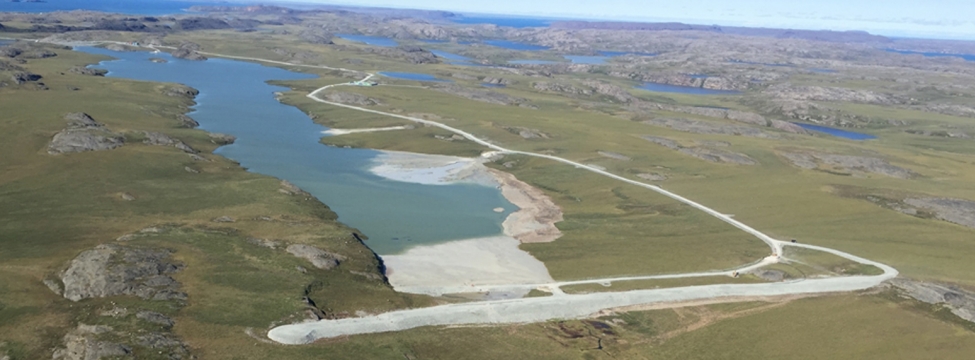To serve you better, our new website displays information specific to your location.
Please visit the site and bookmark it for future use.
Dams with Frozen Components: Fit For Purpose Tailings Management Solutions
The tailings management system for the Hope Bay Project, in Nunavut, Canada, includes sub-aerial tailings deposition into the Doris tailings impoundment area (Doris TIA). The Doris TIA is located in the basin of the former Tail Lake, a shallow lake which has been delisted in accordance with Schedule II of the Metal Mining Effluent Regulations. When fully developed, the Doris TIA, will consist of one frozen core water retaining dam (North Dam), and two frozen foundation dams (South Dam and West Dam). A Geosynthetic Clay Liner (GCL) system has been incorporated in each of the tailings dam designs. Tailings will be discharged from the South and West Dams, as well as select locations around the perimeter of the facility. The North Dam will provide water containment for the Reclaim Pond, and no tailings will be in contact with the dam during its 30-year design life. At closure, the Reclaim Pond will be drained, and the North Dam breached, with no need for a permanent water retaining dam.
Construction on the frozen core North Dam was completed in 2012, and construction of the frozen foundation South Dam was completed in 2018. Tailings deposition started in 2016. These unique tailings dam designs were required because of the complex and highly variable foundation conditions which consist of bedrock to very thick saline, ice saturated marine silt and clay permafrost. This presentation will provide an overview of the tailings management system, focusing on the unique and innovative containment dam designs that was required to overcome the site-specific challenges associated with climate, foundation conditions, lack of borrow material and site remoteness. This case study demonstrates how tailings management designs need to be adapted to account for local conditions.


